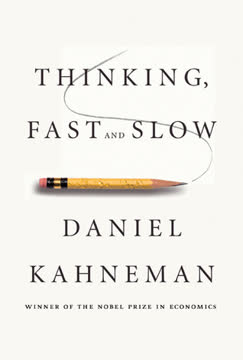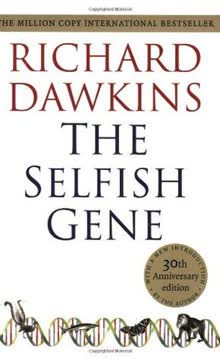मुख्य निष्कर्ष
1. भौगोलिक कारकों ने मानव समाजों के असमान विकास को आकार दिया
"इतिहास ने विभिन्न लोगों के लिए विभिन्न मार्गों का अनुसरण किया क्योंकि लोगों के पर्यावरण में भिन्नताएँ थीं, न कि लोगों के बीच जैविक भिन्नताएँ।"
पर्यावरणीय निर्धारणवाद। यह पुस्तक तर्क करती है कि मानव समाजों के बीच विकास की दर में व्यापक भिन्नताएँ मुख्य रूप से भौगोलिक और पर्यावरणीय कारकों के कारण थीं, न कि जनसंख्याओं के बीच अंतर्निहित भिन्नताओं के कारण। इन कारकों में शामिल हैं:
- घरेलू बनाने योग्य पौधों और जानवरों की उपलब्धता
- महाद्वीप का आकार और दिशा (पूर्व-पश्चिम बनाम उत्तर-दक्षिण धुरी)
- विचारों और प्रौद्योगिकियों के प्रसार में बाधाएँ (रेगिस्तान, पहाड़, महासागर)
- कृषि और जनसंख्या वृद्धि के लिए उपयुक्त जलवायु और पारिस्थितिकी
ये भौगोलिक लाभ या हानि समाजों को विभिन्न पथों पर ले गई, जिससे प्रौद्योगिकी, राजनीतिक संगठन और आर्थिक शक्ति में असमानताएँ उत्पन्न हुईं, जो आज भी बनी हुई हैं।
2. खाद्य उत्पादन जटिल सभ्यताओं के लिए उत्प्रेरक था
"खाद्य उत्पादन को अपनाना एक स्व-संवर्धक प्रक्रिया का उदाहरण है—एक ऐसा जो सकारात्मक फीडबैक चक्र में स्वयं को उत्प्रेरित करता है, एक बार शुरू होने पर तेजी से बढ़ता है।"
कृषि क्रांति। शिकार और संग्रहण से कृषि और पशुपालन के माध्यम से खाद्य उत्पादन की ओर संक्रमण मानव इतिहास में एक महत्वपूर्ण मोड़ था। इस बदलाव ने निम्नलिखित की अनुमति दी:
- जनसंख्या वृद्धि और घनत्व
- श्रम का विशेषीकरण
- प्रौद्योगिकी और शिल्प का विकास
- सामाजिक पदानुक्रम और जटिल राजनीतिक संरचनाओं का उदय
खाद्य उत्पादन ने खाद्य अधिशेष उत्पन्न किए, जिसने बड़े जनसंख्याओं और गैर-खाद्य उत्पादन करने वाले विशेषज्ञों जैसे कारीगरों, सैनिकों और शासकों का समर्थन किया। यह सकारात्मक फीडबैक लूप सामाजिक विकास को तेज़ी से बढ़ाने में सहायक रहा और प्रारंभिक सभ्यताओं के उदय का कारण बना।
3. पौधों और जानवरों का घरेलूकरण सामाजिक उन्नति को प्रेरित करता है
"सभी फसलें जंगली पौधों की प्रजातियों से उत्पन्न हुईं। कुछ जंगली पौधों को फसल में कैसे बदला गया?"
मनुष्यों और घरेलू प्रजातियों का सह-विकास। घरेलूकरण की प्रक्रिया एक दीर्घकालिक, अक्सर अनजाने में जंगली प्रजातियों का चयन था, जो मनुष्यों के लिए लाभकारी गुणों के लिए किया गया। मुख्य बिंदुओं में शामिल हैं:
- घरेलूकरण कई विश्व क्षेत्रों में स्वतंत्र रूप से हुआ
- कुछ क्षेत्रों में घरेलूकरण के लिए अधिक उपयुक्त जंगली प्रजातियाँ थीं
- पशु घरेलूकरण ने भोजन, श्रम, परिवहन और उर्वरक प्रदान किया
- पौधों का घरेलूकरण विश्वसनीय खाद्य स्रोतों और अधिशेषों की ओर ले गया
प्रमुख घरेलू प्रजातियाँ:
- फसलें: गेहूँ, चावल, मक्का, आलू
- जानवर: भेड़, बकरियाँ, गाय, सूअर, घोड़े
यूरोशिया में घरेलूकरण योग्य प्रजातियों की उपलब्धता ने वहाँ के समाजों को जटिल सभ्यताओं के विकास में महत्वपूर्ण बढ़त दी।
4. यूरोशिया की पूर्व-पश्चिम धुरी ने प्रौद्योगिकी के तेज प्रसार को सुगम बनाया
"यूरोशिया की पूर्व-पश्चिम धुरी ने प्राचीन समय में कई चीनी जानवरों और फसलों को पश्चिम की ओर फैलने की अनुमति दी, जबकि पश्चिम एशियाई घरेलूकरण भी पूर्व की ओर चीन में फैला।"
महाद्वीपीय दिशा का महत्व। यूरोशिया की मुख्यतः पूर्व-पश्चिम धुरी ने समान अक्षांशों और जलवायु के बीच फसलों, जानवरों और प्रौद्योगिकियों के आसान प्रसार की अनुमति दी। यह प्रसार महत्वपूर्ण था क्योंकि:
- एक अक्षांश के लिए अनुकूलित पौधे और जानवर अक्सर समान अक्षांशों पर फलते-फूलते थे
- प्रौद्योगिकियाँ और विचार समान चुनौतियों का सामना करने वाले समाजों के बीच अधिक आसानी से फैल सकते थे
- निरंतर भूमि द्रव्यमान ने व्यापार और सांस्कृतिक आदान-प्रदान को सुगम बनाया
इसके विपरीत, अमेरिका और अफ्रीका की उत्तर-दक्षिण धुरी ने प्रसार में बाधाएँ उत्पन्न कीं, क्योंकि फसलों और जानवरों को फैलने के दौरान नए जलवायु के अनुकूल होना पड़ा। महाद्वीपीय दिशा में यह भिन्नता यूरोशिया के तेज़ प्रौद्योगिकी और सामाजिक विकास में योगदान करती है।
5. बंदूकें, रोग और इस्पात ने यूरोशियनों को विजय में लाभ दिया
"विभिन्न लोगों के बीच अंतःक्रियाओं का इतिहास आधुनिक दुनिया को विजय, महामारी और नरसंहार के माध्यम से आकार देता है।"
विजय के निकटतम कारण। खाद्य उत्पादन और प्रौद्योगिकी विकास में यूरोशिया की बढ़त ने अन्य समाजों के साथ उनके संपर्कों में तीन प्रमुख लाभ प्रदान किए:
- बंदूकें: श्रेष्ठ हथियार और सैन्य प्रौद्योगिकी
- रोग: उन बीमारियों के प्रति प्रतिरक्षा जो अन्य जनसंख्याओं को devastate कर देती थीं
- इस्पात: उन्नत धातुकर्म और उपकरण
ये लाभ अंतर्निहित श्रेष्ठता के कारण नहीं थे, बल्कि घनी जनसंख्या, पशु घरेलूकरण और प्रौद्योगिकी के आदान-प्रदान के लंबे इतिहास का परिणाम थे। इन कारकों के संयोजन ने यूरोशियनों को विजय और उपनिवेशीकरण के माध्यम से दुनिया के बड़े हिस्से पर प्रभुत्व स्थापित करने की अनुमति दी।
6. लेखन प्रणालियाँ आर्थिक और राजनीतिक आवश्यकताओं से विकसित हुईं
"लेखन हथियारों, रोगाणुओं और केंद्रीकृत राजनीतिक संगठन के साथ विजय के आधुनिक एजेंट के रूप में आगे बढ़ा।"
साक्षरता के रूप में शक्ति। लेखन प्रणालियों का विकास जटिल समाजों की आवश्यकताओं से निकटता से जुड़ा था:
- व्यापार और कराधान के लिए रिकॉर्ड-कीपिंग
- कानूनों और धार्मिक ग्रंथों का संहिताबद्ध करना
- लंबी दूरी पर संचार
लेखन प्रणालियाँ आमतौर पर विकसित हुईं:
- चित्रलिपियाँ (वस्तुओं का प्रतिनिधित्व करती हैं)
- लोगोग्राम (शब्दों या अवधारणाओं का प्रतिनिधित्व करती हैं)
- स्वरवृत्तियाँ (स्वरों का प्रतिनिधित्व करती हैं)
- वर्णमाला (व्यक्तिगत ध्वनियों का प्रतिनिधित्व करती हैं)
लेखन का प्रसार, अक्सर विजय या व्यापार के माध्यम से, समाजों के बीच ज्ञान और प्रौद्योगिकियों के प्रसार को और तेज़ी से बढ़ाने में सहायक रहा।
7. प्रतिस्पर्धा और नवाचार के माध्यम से सामाजिक जटिलता बढ़ी
"पोलिनेशियन समाजों के बीच सभी भिन्नताएँ, केवल 3,200 वर्षों में, विभिन्न पर्यावरण और संस्थापक प्रभावों के परिणामस्वरूप विकसित हुईं, जो समान पूर्वज संस्कृति पर आधारित थीं।"
समाजों का विभाजनात्मक विकास। जैसे-जैसे मानव जनसंख्या विभिन्न पर्यावरण में फैली और बसी, उन्होंने विभिन्न सामाजिक संरचनाएँ और प्रौद्योगिकियाँ विकसित कीं:
- प्रमुखता और राज्य सरल जनजातीय संगठनों से उभरे
- श्रम का विशेषीकरण प्रौद्योगिकी नवाचारों की ओर ले गया
- समाजों के बीच प्रतिस्पर्धा ने आगे की प्रगति को प्रेरित किया
यह प्रक्रिया समान नहीं थी, जैसा कि पोलिनेशियन समाजों में विविध परिणामों से स्पष्ट होता है, जो एक सामान्य पूर्वज संस्कृति से विकसित हुए। पर्यावरणीय बाधाएँ, जनसंख्या का आकार, और अलगाव सभी ने यह निर्धारित करने में भूमिका निभाई कि एक समाज कितनी जटिलता प्राप्त कर सकता है।
8. पर्यावरणीय भिन्नताओं ने विकास के विविध पथों को जन्म दिया
"इतिहास का व्यापक पैटर्न ... विभिन्न महाद्वीपों के लोगों के दीर्घकालिक इतिहास के बीच भिन्नताएँ हैं।"
पारिस्थितिकीय निर्धारणवाद। यह पुस्तक तर्क करती है कि पर्यावरणीय कारकों ने विभिन्न समाजों के विकास की पथों को बड़े पैमाने पर निर्धारित किया:
- उपजाऊ नदी घाटियों ने प्रारंभिक कृषि का समर्थन किया (जैसे, मेसोपोटामिया, नील, सिंध)
- द्वीप समाजों ने समुद्री प्रौद्योगिकियों का विकास किया (जैसे, पोलिनेशिया)
- कठोर पर्यावरण ने जनसंख्या वृद्धि और प्रौद्योगिकी विकास को सीमित किया (जैसे, ऑस्ट्रेलिया)
इन पर्यावरणीय भिन्नताओं ने निम्नलिखित को जन्म दिया:
- जनसंख्या वृद्धि की भिन्न दरें
- सामाजिक जटिलता के विभिन्न स्तर
- असमान प्रौद्योगिकी विकास
- विविध सांस्कृतिक प्रथाएँ और विश्वास
पर्यावरण और मानव समाजों के बीच का अंतःक्रियात्मक संबंध इतिहास में देखी गई संस्कृतियों और सभ्यताओं की विविधता को उत्पन्न करता है।
9. अलगाव और जनसंख्या का आकार प्रौद्योगिकी प्रगति को प्रभावित करते हैं
"संक्षेप में, चीन का इतिहास पूर्वी एशिया के सभी इतिहास की कुंजी प्रदान करता है।"
नवाचार में कारक। यह पुस्तक एक समाज की प्रौद्योगिकी प्रगति की दर निर्धारित करने में दो महत्वपूर्ण कारकों की पहचान करती है:
- जनसंख्या का आकार: बड़ी जनसंख्या अधिक संभावित आविष्कारकों और नवाचारों का उत्पादन करती है
- संपर्क: अधिक बाहरी संपर्क वाले समाज प्रौद्योगिकियों को उधार और अनुकूलित कर सकते हैं
चीन की बड़ी जनसंख्या और सापेक्षिक संपर्क ने इसे नवाचार का एक प्रारंभिक केंद्र बनने की अनुमति दी। हालाँकि, इसके अलगाव के समय ने ठहराव का कारण बना। इसके विपरीत, छोटे, अलग-थलग समाज जैसे तस्मानिया ने समय के साथ प्रौद्योगिकियों को खो दिया।
नवाचार को बढ़ावा देने वाले कारक:
- घनी जनसंख्या
- व्यापार नेटवर्क
- समाजों के बीच प्रतिस्पर्धा
- नए विचारों के प्रति सांस्कृतिक खुलापन
इन कारकों का अंतःक्रियात्मक संबंध यह समझाता है कि कुछ समाज प्रौद्योगिकी में नेता बन गए जबकि अन्य पीछे रह गए या यहां तक कि पीछे हट गए।
अंतिम अपडेट:
FAQ
What's Guns, Germs, and Steel about?
- Explaining disparities: The book explores why different human societies developed at different rates, focusing on environmental, geographic, and biological factors rather than racial differences.
- Yali's question: The narrative is driven by a question from a New Guinean politician, Yali, about why Europeans had more material wealth ("cargo") than New Guineans.
- Interdisciplinary approach: Jared Diamond integrates insights from anthropology, biology, and history to provide a comprehensive understanding of human societal development.
Why should I read Guns, Germs, and Steel?
- Groundbreaking perspective: The book offers a non-racist explanation for inequalities in human societies, challenging traditional narratives of inherent superiority.
- Engaging storytelling: Diamond presents complex ideas in an accessible manner, making it a compelling read for those interested in history, sociology, or human evolution.
- Relevance to modern issues: Understanding historical roots of societal disparities can provide insights into contemporary global inequalities and conflicts.
What are the key takeaways of Guns, Germs, and Steel?
- Geography shapes history: Geographic factors significantly influenced the development of agriculture, technology, and political organization across continents.
- Food production's impact: The transition from hunting-gathering to food production enabled societies to support larger populations and complex political structures.
- Role of germs and technology: Infectious diseases and technological advancements, particularly in weaponry, played pivotal roles in European conquests over other societies.
How does Jared Diamond address Yali's question in Guns, Germs, and Steel?
- Geographic advantages: Societies with favorable geographic conditions, like the Fertile Crescent, had access to more domesticable species, leading to earlier agricultural development.
- Cultural diffusion: The east-west axis of Eurasia allowed for rapid diffusion of technology and ideas, unlike the north-south axes of Africa and the Americas.
- Historical context: Diamond provides a framework to understand how geographic and environmental factors shaped the fates of different societies over time.
How does Guns, Germs, and Steel explain the rise of agriculture?
- Environmental factors: Certain regions, like the Fertile Crescent, had the right conditions for early agriculture, including suitable wild plants and animals for domestication.
- Food surplus and complexity: Agriculture led to food surpluses, allowing populations to grow and societies to become more complex with specialized roles and trade.
- Cultural evolution: The transition to agriculture was a gradual process influenced by resource availability and the need for stability.
What role do germs play in Guns, Germs, and Steel?
- Infectious diseases as weapons: Germs, particularly those from densely populated agricultural societies, decimated indigenous populations upon contact with Europeans.
- Immunity disparities: Societies with a long history of agriculture developed immunities to certain diseases, giving them an advantage over less exposed populations.
- Historical consequences: Diseases like smallpox significantly altered history, facilitating European conquests and colonization efforts.
How does Jared Diamond address the concept of race in Guns, Germs, and Steel?
- Rejecting biological determinism: Diamond argues against racial differences as explanations for societal success, emphasizing environmental and geographic factors instead.
- Cultural evolution over time: All humans share a common ancestry, and cultural practices, rather than inherent traits, shape societal outcomes.
- Focus on ultimate causes: Diamond encourages looking for deeper explanations for historical disparities, moving beyond superficial racial theories.
What is the significance of the title Guns, Germs, and Steel?
- Symbolizing power dynamics: The title reflects the three main factors contributing to the dominance of certain societies: military technology (guns), infectious diseases (germs), and industry/agriculture (steel).
- Interconnectedness of factors: Each element in the title is linked, illustrating how they collectively shaped human history.
- Framework for understanding history: The title serves as a lens to analyze historical events and societal developments, emphasizing environmental and technological influences.
How does Guns, Germs, and Steel explain the differences in societal development?
- Environmental factors matter: Geographic conditions, such as climate and resources, led to different development rates. Eurasia had more domesticable plants and animals, facilitating growth.
- Domestication and population growth: Societies that domesticated plants and animals could support larger populations, allowing for complex social structures and technological advancements.
- Germs and conquests: Diseases from domesticated animals decimated populations during conquests, giving immune societies a significant advantage.
What are the best quotes from Guns, Germs, and Steel and what do they mean?
- “History followed different courses...”: This quote encapsulates the book's thesis that environmental factors, not racial superiority, explain historical disparities.
- “The question, ‘Why did human societies...’”: Diamond critiques traditional explanations for societal differences, advocating for a scientific understanding of history.
- “Food production was indirectly a prerequisite...”: Highlights the interconnectedness of agriculture and technological advancement, suggesting farming societies were better positioned for future developments.
How does Guns, Germs, and Steel relate to modern global issues?
- Understanding inequality: Provides historical context for contemporary disparities in wealth and power, encouraging consideration of long-term effects of historical developments.
- Lessons for future interactions: Examining the past offers insights into fostering cooperation and understanding in a globalized world.
- Relevance to current conflicts: Themes of conquest, colonization, and cultural exchange resonate with ongoing global tensions and colonial legacies.
How does Guns, Germs, and Steel explain the spread of technology?
- Geographic diffusion: Technology spreads more easily along east-west axes, as seen in Eurasia, facilitated by similar climates and day lengths.
- Cultural exchange: Trade and conquest played roles in technology spread; interacting societies were more likely to adopt and adapt new technologies.
- Population density: Higher densities led to more innovation and advancement; larger populations had more inventors and competition, driving progress.
समीक्षाएं
गन्स, जर्म्स, और स्टील यह जानने की कोशिश करता है कि कुछ समाज दूसरों की तुलना में अधिक तेजी से क्यों विकसित हुए, और इसके लिए भौगोलिक और पर्यावरणीय कारकों को जातीय श्रेष्ठता के बजाय जिम्मेदार ठहराता है। डायमंड का तर्क है कि यूरेशियाई सभ्यताओं को पौधों और जानवरों के पालतूकरण के अनुकूल अवसरों का लाभ मिला, जिससे तकनीकी प्रगति हुई। जबकि इस पुस्तक को इसके विचारोत्तेजक विचारों और व्यापक शोध के लिए सराहा गया है, कुछ समीक्षक डायमंड के निर्धारक दृष्टिकोण और सांस्कृतिक कारकों पर ध्यान न देने की आलोचना करते हैं। पुस्तक की सुलभ लेखन शैली और अंतर्विषयक दृष्टिकोण इसे मानव इतिहास और विकास में रुचि रखने वाले पाठकों के लिए आकर्षक बनाते हैं।



















